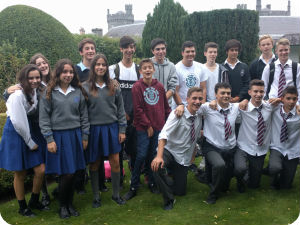The UK stopped being a member of the European Union (EU) after 23:00 GMT on 31 January 2020.
For those not following every twist and turn, this is what you need to know.
What is Brexit?
Brexit - British exit - refers to the UK leaving the EU.
What is the European Union?
The EU is an economic and political union involving 28 European countries. It allows free trade, which means goods can move between member countries without any checks or extra charges. The EU also allows free movement of people, to live and work in whichever country they choose.
The UK joined in 1973 (when it was known as the European Economic Community) and it will be the first member state to withdraw.
What happens after Brexit day?
After the UK formally leaves the EU on 31 January 2020, there is still a lot to talk about and months of negotiation will follow.
While the UK has agreed the terms of its EU departure, both sides still need to decide what their future relationship will look like.
During this 11-month period, the UK will continue to follow all of the EU's rules and its trading relationship will remain the same.
What needs to be agreed?
This is needed because the UK will leave the single market and customs union at the end of the transition. A free trade agreement allow goods to move around the EU without checks or extra charges.
If a new one cannot be agreed in time, then the UK faces the prospect of having to trade with no deal in place. That would mean tariffs (taxes) on UK goods travelling to the EU and other trade barriers.
Aside from trade, many other aspects of the future UK-EU relationship will also need to be decided. For example:
- Law enforcement, data sharing and security
- Aviation standards and safety
- Access to fishing waters
- Supplies of electricity and gas
- Licensing and regulation of medicines
Prime Minister Boris Johnson insists the transition period will not be extended, but the European Commission has warned that the timetable will be extremely challenging.
What is the Brexit deal?
The transition period and other aspects of the UK's departure were agreed in a separate deal called the withdrawal agreement.
Most of that was negotiated by Theresa May's government. But after Mr Johnson replaced her in July 2019, he removed the most controversial part - the backstop.
